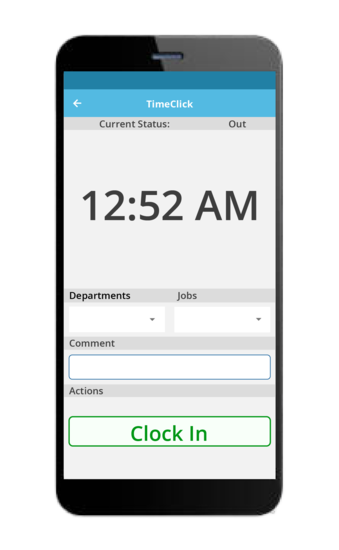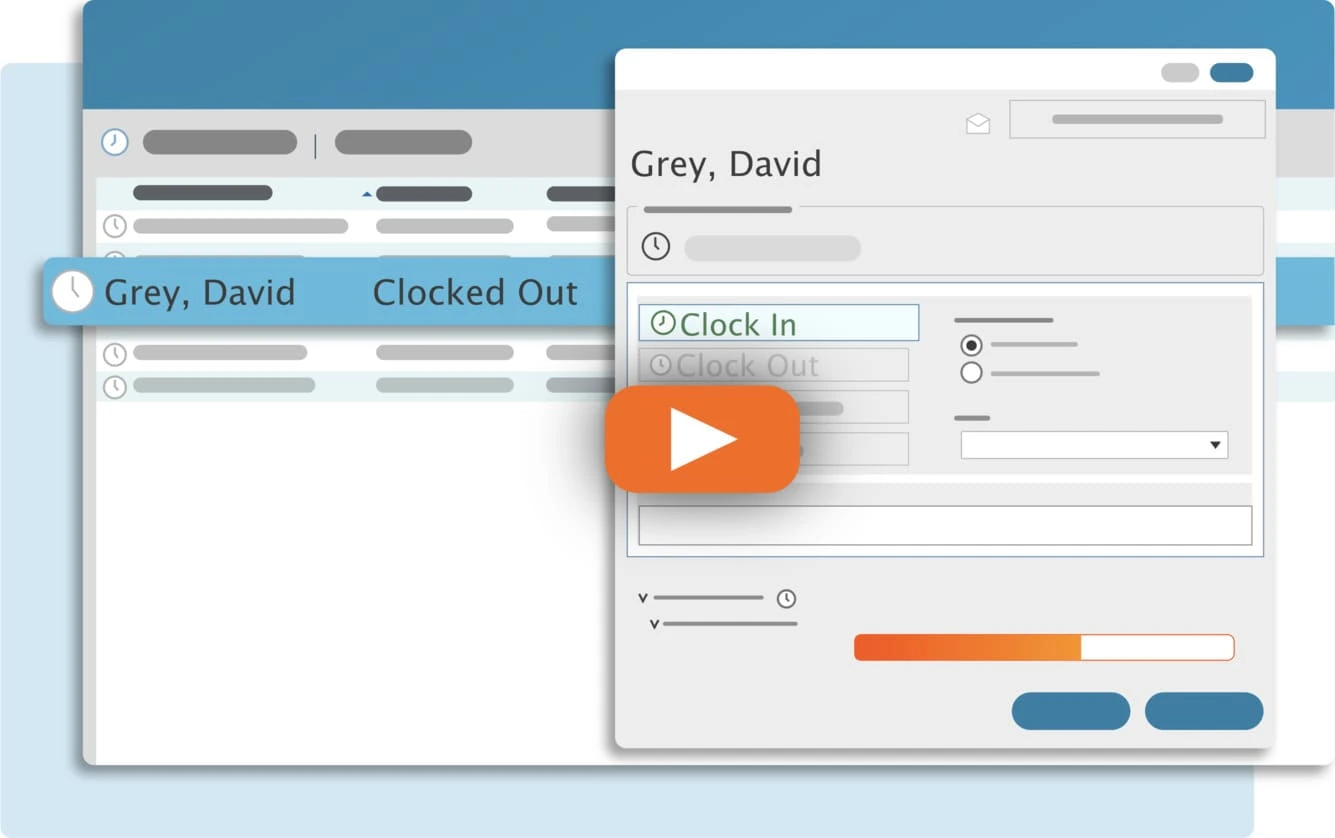Oftentimes, we make decisions solely based on the front-facing price tag. In the small business world, these kinds of decisions can leave you with a bad payroll system that can end up costing you way more than any payroll product on the market.
We’ve got plenty of numbers coming your way if the last statement leaves you even a bit skeptical. Let’s dive straight in and explore just how much a bad payroll system can cost you.
Defining Payroll Leakage
Payroll leakage encompasses any mistake, error, or mishap that affects the processing of payroll.
Leakage can occur on the front end, for example, with tampered timecards. You can also see backend payroll leakage – take a miscalculation as an example here.
Any time you or an employee creates some kind of inaccuracy, we identify the event as payroll leakage.
What is a Bad Payroll System?
With payroll leakage defined, we can simply identify bad payroll systems as practices that fail to prevent or fail to address payroll leakage efficiently.
You will notice that the previous statement acknowledges the possibility of error no matter the system. It’s true – a leak is essentially inevitable.

In contrast, a good payroll system will allow you to plug and fix the leak quickly so you don’t lose money and your employees get paid properly.
Get ready – this next section may include a blunt reality check.
With these definitions in place, let’s go ahead and identify some examples of bad payroll systems:
-
- Manual spreadsheets (both paper and Excel)
-
- Paper timecards
-
- Handwritten paychecks
-
- Third-party accounting with little to no accountability
-
- Software that requires significant amounts of manual entry
Bad Payroll Systems Explained
You may look at the bulleted list we provided and scoff, roll your eyes, or have a bunch of questions. The short response to any such reaction involves the process of putting out a payroll fire.
Anyone can tell you that a sophisticated payroll system like QuickBooks, ADP, or Paychex can help prevent payroll leakage. Instead, we’d like to focus our attention on addressing payroll leakage.
Let’s take a restaurant as an example. Say this restaurant uses a paper puncher for employee timecards and Excel spreadsheets to process payroll.
If all goes well, employees always promptly punch in and out without errors and submit their timecards in a timely manner. The boss then takes these timecards, accurately transfers all this information on the Excel spreadsheet and cuts checks for the employees.
It’s not hard to imagine something going wrong in any one of the steps we just outlined. Employees often forget to clock in or out. Don’t forget – in a restaurant, employees can wear multiple hats and perform different tasks that each have different pay rates.
Barring any employee errors, believing that you as a business owner will never make a clerical error is a complete fantasy. Entrepreneurship is not a 9-5, 40-hour type of job. Running your business can feel like taming a whirlwind that never weakens.
A Front End Leak
With this point made, let’s explore an event where a front end mistake happens. In our first example, let’s take an employee who made manual edits on their timecard.
The biggest problem with manual, hand-written records involves how easily people can tamper with them. On one hand, you could overpay an employee that didn’t actually work the hours they said they worked. On another, you could confront an employee with no real way of backing up your claims.
The situation devolves into a “he said, she said” disaster.
A Backend Leak
Now let’s explore a backend error. Say your employees submit everything correctly and promptly.
John who works as a dishwasher makes $10 per hour. Sally has a lot more experience, so she jumps from job to job. She worked a few hours helping John with dishes, waited tables for a few hours, and also ran the front of house as host for the last few hours in the day.
Ensuring you pay John and Sally correctly may not prove too difficult. The problem is, most restaurants don’t operate with just two employees. Multiply the number of employees and the amounts of jobs and pay rates and you could end up paying multiple people incorrectly.

If this did happen, imagine the process of going back through everyone’s paper timecards from the previous pay period and trying to straighten the mess yourself. You may have to redo the work you already did while updating your spreadsheet to reflect accurate information.
Simplify Time Tracking with TimeClick!
Download our free trial—simple, secure, offline tracking, no fluff.

The Real Cost of Bad Payroll
If you’ve read this far and thought, ‘Big deal, I can just fix the mistakes’ we have some additional info that may shed more light on the problem.
In the best-case scenario, yes you can fix the mistakes and move on.
In this ball game, however, you may only get two strikes before your employee walks out. The Workforce Institute at Kronos conducted a survey that reports 49% of employees will start a job search after two payroll errors.
Nothing requires employees to tell you when they do start looking, so you may never expect the day that employee hands in their two-week notice.
This situation may encompass payroll errors that underpaid the employee, whether by incorrect calculation of rates or deductions.
On the other hand, you could hemorrhage money to employees that inflate their hours worked. Commonly referred to as time theft, front end errors can go unnoticed indefinitely with bad payroll systems.
Backend Payroll Solutions
Now that we’ve outlined the possibilities surrounding front and backend payroll leakage, let’s explore solutions that can help tighten your processes.
Small business owners have a wide range of options designed to manage the backend of payroll. QuickBooks represents one such option that does all the math for you while helping you manage everything from invoicing and expenses to project expenses and profitability.
A huge range of features start at just $12.50 per month with their Simple Start package.
ADP and Paychex also offer small business-oriented payroll packages. You can grab a quote from them based on the features you need that can even involve insurance and other human resources features that go beyond just payroll.
We strongly recommend researching these and other options to find the solution that fits your budget while addressing all of your needs.
Remember that these types of solutions not only streamline the processing of payroll, but also help keep your records secure and easy to access so you can quickly resolve any fires that do pop up.
Frontend Payroll Solutions
Some of these solutions offer timekeeping features that can help shore up the weaknesses in your current system. Unfortunately, many of these timekeeping features fail to offer sophisticated options for customization and efficient automation.
In a nutshell, you may find yourself manually entering information that the timekeeping feature fails to manage for you.
As a mainstay in the time clock software industry, TimeClick has helped thousands of businesses take time tracking to the next level. Our customers enjoy fully customizable timesheets, a mobile time clock app, and a huge array of other features at just $199 with our most affordable package.
Best of all, you can try everything for free and with no strings attached for two weeks.
Conclusion
Bad payroll systems can cost you thousands over an indefinite amount of time. In the worst case scenario, you could even lost valuable employees and encounter difficulties running your business.
Avoid pushing away your employees and tax headaches with sophisticated payroll solutions that can fit your budget.
If you have additional questions that we did not answer here or want to talk about what TimeClick can do for you, we’re happy to help. Get connected to our five-star support team by phone at (435) 753-4102, by email at support@timeclick.com or by chat on our home page.
Ready to streamline your employee time tracking, boost productivity, and simplify payroll? Sign up for your FREE 14-day trial today and see how TimeClick can transform your business!
Start your FREE TimeClick Trial Today.

